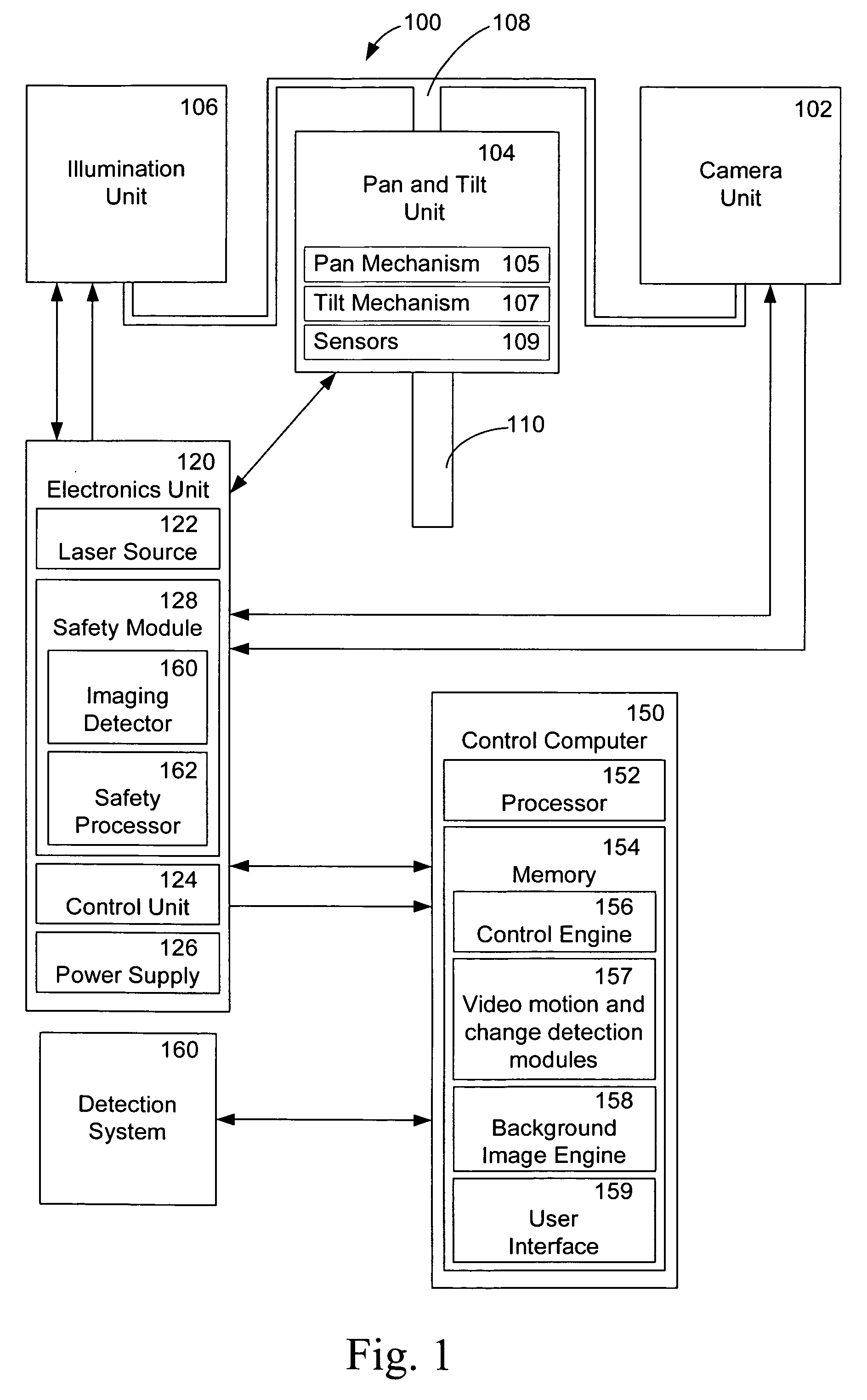Systems and methods for night time surveillance
a surveillance system and night vision technology, applied in the field of surveillance systems, can solve the problems of insufficient beam intensity, narrow instantaneous field of view, and difficult for users of such surveillance cameras to orient themselves in the surveyed area, so as to reduce the field of regard
- Summary
- Abstract
- Description
- Claims
- Application Information
AI Technical Summary
Benefits of technology
Problems solved by technology
Method used
Image
Examples
Embodiment Construction
[0026] Embodiments of the invention provide systems and methods for night time surveillance. There are multiple embodiments of the present invention. By means of introduction and example, one illustrative embodiment of the present invention provides a night time surveillance system that utilizes an IR laser illuminator with a zoom collimating lens and an imager composed of a video camera and zoom lens. The optical axes of the illuminator and the imager are spatially separated to create a parallax in order to reduce atmospheric backscattering. The illumination beam from the laser illuminator may be shaped to uniformly distribute light over the whole field of view. The focal length of a collimator in the illuminator may be made to change with the focal length of the camera or they can move independently of one another. The system may also include a safety mechanism or circuit that is capable of detecting when objects are too close to the illuminator and can shut down the laser source....
PUM
 Login to View More
Login to View More Abstract
Description
Claims
Application Information
 Login to View More
Login to View More - R&D
- Intellectual Property
- Life Sciences
- Materials
- Tech Scout
- Unparalleled Data Quality
- Higher Quality Content
- 60% Fewer Hallucinations
Browse by: Latest US Patents, China's latest patents, Technical Efficacy Thesaurus, Application Domain, Technology Topic, Popular Technical Reports.
© 2025 PatSnap. All rights reserved.Legal|Privacy policy|Modern Slavery Act Transparency Statement|Sitemap|About US| Contact US: help@patsnap.com



